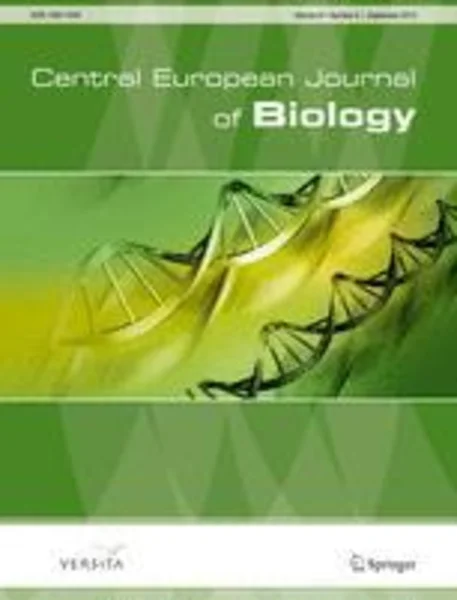-
do ca2+-chelating polysaccharides reduce calcium ion release from gypsum-based biomaterials?
جزئیات بیشتر مقاله- تاریخ ارائه: 1392/07/24
- تاریخ انتشار در تی پی بین: 1392/07/24
- تعداد بازدید: 955
- تعداد پرسش و پاسخ ها: 0
- شماره تماس دبیرخانه رویداد: -
backgroundcalcium sulphate, a widely used bone filler, may negatively affect human osteoblasts due to release of high quantities of calcium ions. to reduce this effect, an attempt was made to enrich calcium sulphate with ca2+-chelating plant and rhizobial exopolysaccharides (eps).
methodology
incubation of polysaccharide-enriched calcium sulphate composites was performed in dmem/f12 medium. ca2+ (and mg2+ and pi) levels were estimated using standardised, spectrophotometry-based kits. composite surface morphology was tested using sem technique.
results
rhizobial eps was found slightly less effective at ca2+ chelation than sodium alginate. both polysaccharides may be used as gypsum supplements in the form of setting liquids (0.3% total mass), but only sodium alginate may be used as a powder (up to 5% total mass of the composite). polysaccharide-triggered reduction of ca2+ release reached the level of 50% during the first 2.5 h of incubation, then decreased significantly.
conclusions
both tested polysaccharides possess calcium-chelating properties. however, although alginate caused a reduction in ca2+ levels in the media incubated with the gypsum samples, the reduction was too short lived to provide a long-term effect. further modification of the composite content using calcium-deficient hydroxyapatite and low-molecular weight rhizobial eps with higher solubility could bring more satisfactory results.
مقالات جدیدترین رویدادها
-
استفاده از تحلیل اهمیت-عملکرد در ارائه الگوی مدیریت خلاقیت سازمانی و ارائه راهکار جهت بهبود
-
بررسی تاثیر ارزش وجوه نقد مازاد بر ساختار سرمایه شرکت های پذیرفته شده در بورس اوراق بهادار تهران
-
بررسی تأثیر سطح افشای ریسک بر قرارداد بدهی شرکت های پذیرفته شده در بورس اوراق بهادار تهران
-
بررسی تأثیر رتبه بندی اعتباری مبتنی بر مدل امتیاز بازار نوظهور بر نقد شوندگی سهام با تأکید بر خصوصی سازی شرکت ها
-
تأثیر آمیخته بازاریابی پوشاک ایرانی بر تصویر ذهنی مشتری پوشاک ایرانی (هاکوپیان)
-
بررسی نقش خودکارآمدی کنترل احساس، علائم افسردگی و استرس پس از سانحه بر خطر ابتلا به خودکشی در میان نوجوانان شهرستان کرمانشاه
-
برآورد حدود آتربرگ رس های مورد استفاده در هسته رسی سدها با استفاده از شبکه های عصبی مصنوعی (مطالعه موردی: منبع قرضه هسته رسی سد مخزنی آغ چای)
-
جهت های جغرافیایی مطالعات اجتماعی پایه چهارم ابتدایی
-
تعیین فشار، تنش موثر و شتاب در راستای قائم تونل مدفون در خاک ماسه ایی تحت تاثیر انفجار سطحی
-
on the behavior of nitrogen in a low-ni high-mn super duplex stainless steel
مقالات جدیدترین ژورنال ها
-
مدیریت و بررسی افسردگی دانش آموزان دختر مقطع متوسطه دوم در دروان کرونا در شهرستان دزفول
-
مدیریت و بررسی خرد سیاسی در اندیشه ی فردوسی در ادب ایران
-
واکاوی و مدیریت توصیفی قلمدان(جاکلیدی)ضریح در موزه آستان قدس رضوی
-
بررسی تاثیر خلاقیت، دانش و انگیزه کارکنان بر پیشنهادات نوآورانه کارکنان ( مورد مطالعه: هتل های 3 و 4 ستاره استان کرمان)
-
بررسی تاثیر کیفیت سیستم های اطلاعاتی بر تصمیم گیری موفق در شرکتهای تولیدی استان اصفهان (مورد مطالعه: مدیران شرکتهای تولیدی استان اصفهان)
-
رویکرد داده کاوی برای برنامه ریزی فرآیند مبتنی بر دانش
-
بررسی نقش رهبری معنوی بر چابکی سازمانی
-
بررسی تأثیر مالکیت نهادی بر نوسان پذیری قیمت و بازدهی سهام
-
بررسی پیش آینده ای برداشت از سیاست سازمانی
-
structural behavior of pipelines buried in expansive soils under rainfall infiltration (part i: transverse behavior)




سوال خود را در مورد این مقاله مطرح نمایید :